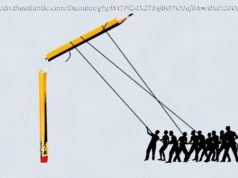Fifty years ago this summer, vibrating with agitation and energy, Marvin Gaye headed down the wood steps into a Detroit studio and made his anthem for the ages. “What’s Going On,” a poignant musical masterpiece crafted in a season of unease, persists as a timely…
Fifty years ago this summer, vibrating with agitation and energy, Marvin Gaye headed down the wood steps into a Detroit studio and made his anthem for the ages.
“What’s Going On,” a poignant musical masterpiece crafted in a season of unease, persists as a timely backdrop to another heated summer, half a century later, when the world feels upside down.
Racial tensions, police controversy, environmental anxieties, a globe on edge — they were the topics on the front burner when Gaye rebooted his musical career and took control of his creative vision inside Motown.
His voice — voices, actually — hit the tape the second week of July 1970.
“There’s too many of you crying… there’s far too many of you dying …“
The song with the silky, layered vocals and an emphatic protest message was topical when Gaye cut it in 1970. It was still relevant when a newly freed Nelson Mandela recited its lyrics for a packed Tiger Stadium in 1990. And it resonates in 2020, in the wake of George Floyd’s killing by police — the 8 minutes and 46 seconds stark enough to slice their way into a pandemic lockdown.
“In these times of crisis and challenge, we still go to those lyrics for strength,” said Detroit author and historian Ken Coleman.
The making of “What’s Going On” is a pillar of Detroit music lore.
Three years after the 1967 riot and rebellion that transformed his adopted hometown, the 31-year-old Gaye was in a deep and evolving head space. Shaken by the death of singing partner Tammi Terrell, haunted by the Vietnam War stories of his younger Army vet brother, Gaye was an emotional lightning rod waiting to be zapped with creative energy when Motown’s Obie Benson and Al Cleveland brought him their new composition about troubles across the land.
His textured recording was constructed over a series of sessions in 1970: the instrumental foundation in June, the vocals in July, the Detroit Symphony Orchestra’s sweetener in September. “What’s Going On” then sat for several months, a hot potato for Motown Records brass who fretted it was too controversial.
When the single finally went public in January 1971, it was an instant, massive hit. A full album was quickly commissioned, and four months later, Gaye’s groundbreaking LP of the same name was out.
The “What’s Going On” single, which reached No. 2 on the Billboard pop chart, was a mainstream breakthrough for conscious soul music. Its stature remains immense — Rolling Stone ranks it No. 4 on its “500 Greatest Songs of All Time” list — and it set the stage for themes now essential to hip-hop, resounding through artists such as Kendrick Lamar, Meek Mill and Joey Badass.
“It allows someone experiencing oppression and trauma — all these tragic moments that the government is often ignoring — to just ask the questions,” said Eldric Laron, a 19-year-old Detroit musician and spoken-word artist. “It’s so relevant today because that’s what a lot of us are doing. We’re asking questions before acting: the what’s and why’s and who’s and when’s. Saying ‘what’s going on?’ is a good starting point for yourself.”
And Gaye’s song, he says, has special meaning as a homegrown treasure.
“Being in Detroit, which is birthed from arts and Black experiences and Black stories, it reminds me of how blessed I am to be a Black man from such a city. I could have been born anywhere,” said Laron. “The song allows me to remind myself of my own power and uniqueness.”
To say “What’s Going On” captured a moment doesn’t entirely do it justice. The song is certainly of its time, a snapshot of a strained America as the ’60s bled into the ’70s. But unlike many other protest songs of the era, it shimmers with a spiritual quality. When it comes to endurance, the song is far more “We Shall Overcome” than “Eve of Destruction.”
Gaye’s masterwork is assertive but not aggressive. It’s as much pain as anger, as much news broadcast as sermon. Like the best popular music through the decades, it achieves the universal by going personal — addressed to “mother,” “brother,” “father,” “babe.” The song is a call for tolerance, a plea for trust.
Gaye was the ideal messenger for that job. He wasn’t new to opening up emotionally: The Washington, D. C.-born artist made his name singing the ups and downs of romantic relations, including a hit two years earlier — “I Heard it Through the Grapevine” — that stood as Motown’s bestseller to that point.
Now he was directing that bold vulnerability to something bigger.
„He was highly sensitive. He would talk about being afraid,” recalled Louvain Demps, a member of the Andantes vocal group and a longtime friend of Gaye. “But to stand next to him, it was like he had all the confidence in the world. Like he wasn’t scared of anything.”
Some great music, like much important art, gets mythologized late. Courage is easy to endorse with the comfort of time.
But “What’s Going On” resonated immediately in its hometown in 1971, said Matt Lee, who grew up in Detroit and was close to co-writer Benson: “This thing lived and breathed right there and then.”
“It was Marvin’s statement of independence and artistic freedom,” Lee said. “But it was also a commentary on who we were, in real time. The impact of that record is impossible to overstate, not only in retrospect, but for what it meant at the time.
Start
United States
USA — Art Marvin Gaye's 'What's Going On' is still relevant and revealing, 50 years...






